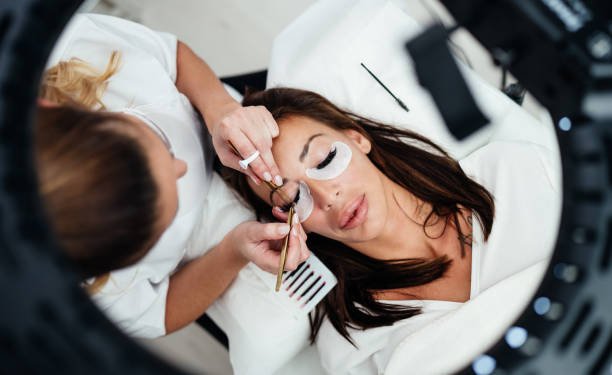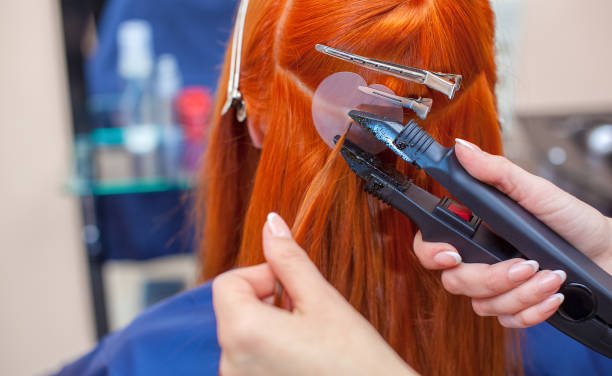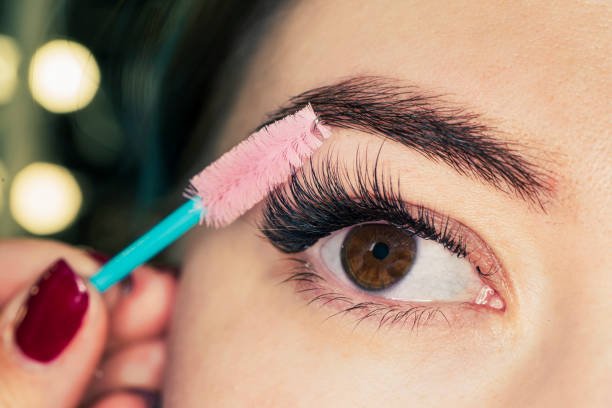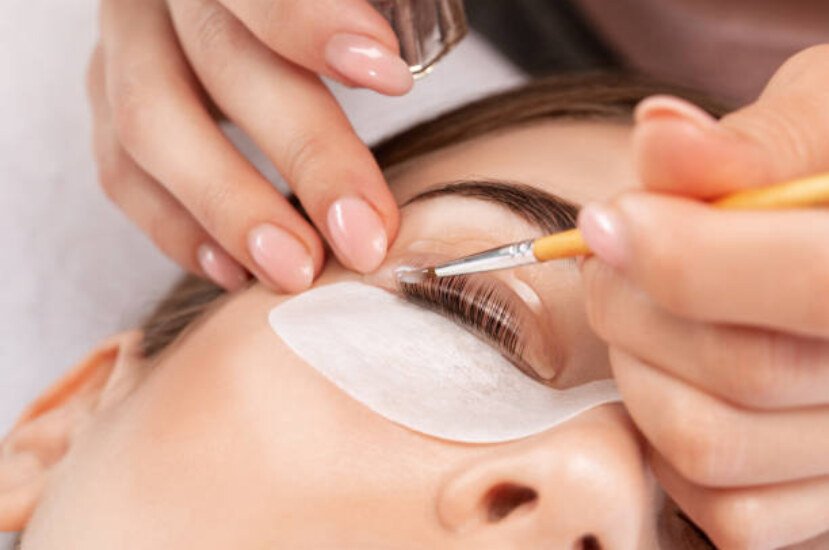Extensions have revolutionized how we approach beauty routines, offering instant volume, length, and glamour. Whether you’re considering your first set of lashes or wondering if hair extensions could transform your look, this comprehensive guide covers everything you need to know. From application methods to maintenance secrets, we’ll explore the world of eyelash and hair extensions to help you make informed decisions about your beauty investment.
Extensions aren’t just about vanity—they’re about confidence, convenience, and personal expression. Many people find that extensions save time in their daily routine while helping them achieve looks that wouldn’t be possible with their natural hair or lashes alone. However, like any beauty treatment, extensions come with considerations around cost, maintenance, and potential effects on your natural hair and lashes.
This guide will answer your most pressing questions about both eyelash and hair extensions, debunk common myths, and provide practical advice for choosing, maintaining, and enjoying your extensions safely. Whether you’re curious about the latest TikTok lash trends or wondering how celebrities achieve those impossibly full manes, we’ve got you covered.
What are eyelash extensions and how are they applied?

Eyelash extensions are individual synthetic, silk, or mink fibers carefully attached to your natural lashes using specialized adhesive. Unlike strip lashes that you apply and remove daily, eyelash extensions are semi-permanent enhancements that last several weeks.
Types of eyelash extensions include synthetic options made from polished acrylic materials, silk extensions that offer a softer, more natural appearance, and mink extensions crafted from real mink fur for the most luxurious feel. Each type varies in weight, texture, and price point, allowing you to choose based on your preferences and budget.
The application process begins with a consultation where your technician assesses your natural lashes and discusses your desired look. You’ll lie comfortably with your eyes closed while the technician uses tweezers to isolate individual natural lashes and attach extensions one by one. The process typically takes 1.5 to 3 hours depending on the desired fullness and your natural lash count.
Eyelash extensions typically last 4-6 weeks with proper care, though most people schedule touch-ups every 2-3 weeks as natural lashes shed and new ones grow in. The longevity depends on your natural lash growth cycle, skincare routine, and how well you follow aftercare instructions.
What are hair extensions and how are they applied?

Hair extensions add length, volume, or color to your natural hair using various attachment methods. Modern extensions can be made from synthetic materials or real human hair, with human hair offering the most natural look and styling versatility.
Types of hair extensions include tape-in extensions that use medical-grade tape for semi-permanent wear lasting 6-8 weeks, clip-in extensions that attach with small clips for temporary styling, sew-in extensions (also called weaves) that are braided into your natural hair, and fusion extensions that use keratin bonds or micro-rings for long-term wear.
The application process varies by type. Tape-in extensions involve sandwiching small sections of your hair between two tape pieces. Clip-ins simply snap into place over sectioned hair. Sew-in methods require braiding your natural hair into cornrows before stitching wefts of extension hair onto the braids. Fusion methods use heat or pressure to attach individual extension strands to small sections of your natural hair.
Hair extensions can last anywhere from one day (clip-ins) to 4-6 months (fusion methods) depending on the attachment type and how well you maintain them. Tape-ins typically need repositioning every 6-8 weeks, while sew-ins can last 2-3 months with proper care.
How can I maintain my eyelash and hair extensions to make them last longer?
Proper maintenance is crucial for maximizing the lifespan of both eyelash and hair extensions while protecting your natural hair and lashes.
For eyelash extensions, avoid oil-based products around your eyes, as oils break down the adhesive. Use water-based cleansers and gently clean your lashes daily with a soft brush. Sleep on your back when possible, and avoid rubbing your eyes. Skip waterproof mascara, which requires harsh removal methods that can damage extensions.
For hair extensions, use sulfate-free shampoos and avoid washing too frequently—2-3 times per week is usually sufficient. Always brush extensions gently, starting from the ends and working upward to prevent tangling. Sleep with hair in a loose braid or silk pillowcase to minimize friction. Deep condition regularly, but avoid applying conditioner to the attachment points of tape-in or fusion extensions.
Heat styling should be minimized for both types of extensions. When using heat tools, always apply a heat protectant and use lower temperature settings than you might with natural hair or lashes.
Are there any alternatives to extensions if I’m concerned about damage?
If you’re worried about potential damage from extensions, several alternatives can enhance your natural lashes and hair.
For lashes, consider lash lifts and tints that enhance your natural lashes without adding weight or requiring adhesives. Lash growth serums containing peptides or prostaglandin analogs can help strengthen and lengthen natural lashes over time. High-quality false lashes for special occasions offer temporary drama without the commitment.
For hair, volumizing products like mousse and root-lifting sprays can create the illusion of fuller hair. Hair fibers that attach to existing strands provide temporary thickness. Clip-in extensions offer the benefits of added length and volume without permanent attachment methods. Professional blowouts and styling techniques can maximize your natural hair’s potential.
Wigs and toppers have also become increasingly sophisticated, offering dramatic transformations without affecting your natural hair at all. Many people rotate between extensions and these alternatives depending on their needs and hair health.
What are the latest trends in eyelash and hair extensions?
The extension world constantly evolves with new techniques, styles, and materials emerging regularly.
Current eyelash extension trends include wispy, textured looks that mimic natural lash patterns rather than uniformly dramatic styles. Colored extensions in subtle browns or bold blues and purples are gaining popularity. Lower lash extensions are becoming more common for complete eye enhancement. The “wet look” extensions that appear slightly glossy are trending on social media.
Hair extension trends focus on seamless blending and natural movement. Lived-in color techniques like balayage are popular in extensions. Curtain bangs created with extensions offer face-framing without cutting natural hair. Protective styling with extensions helps maintain natural hair health while achieving desired looks.
Technology improvements include lighter-weight materials, stronger adhesives that are gentler on natural hair and lashes, and color-matching systems that create more precise matches to natural hair colors.
How do I find a reputable salon or stylist for extensions?
Choosing the right professional is crucial for safe, beautiful results with any type of extension service.
Start by researching local salons and reading reviews on multiple platforms. Look for technicians with specialized training and certifications in extension application. Ask to see before-and-after photos of their work, particularly on clients with similar hair types or eye shapes to yours.
During consultations, reputable professionals will assess your natural hair or lashes, discuss realistic expectations, explain the process thoroughly, and provide detailed aftercare instructions. They should use high-quality products and maintain clean, professional workspaces.
Don’t hesitate to ask about their experience level, what products they use, and their policies for touch-ups or corrections if needed. A good professional will be happy to answer questions and should never pressure you into services you’re not comfortable with.
Can I apply eyelash or hair extensions myself? What are the risks?
While DIY extension kits are available, professional application is strongly recommended for both safety and results.
DIY eyelash extensions pose significant risks including eye injuries from improper tool use, allergic reactions to adhesives, damage to natural lashes from incorrect application or removal, and infections from non-sterile conditions. The precision required for individual lash application makes it extremely difficult to achieve professional results at home.
DIY hair extensions are less risky but still challenging. Clip-ins are designed for self-application and are relatively safe when used correctly. However, permanent methods like tape-ins or fusion extensions require professional expertise to avoid damage. Improper placement can cause uneven weight distribution, leading to breakage or bald spots.
If you must try DIY methods, start with temporary options like clip-ins or magnetic lashes. Always follow instructions carefully, perform patch tests for allergic reactions, and remove extensions immediately if you experience any discomfort or adverse reactions.
Do eyelash extensions really ruin your natural lashes, or is it just a myth?

This common concern deserves a nuanced answer based on current research and professional practices.
Properly applied and maintained eyelash extensions should not damage natural lashes. The key factors are professional application, appropriate extension weight for your natural lashes, and proper aftercare. Problems typically arise from poor application techniques, extensions that are too heavy, or aggressive removal methods.
Some people may experience temporary thinning when first removing extensions, which often results from seeing their natural lashes without the added volume they’ve grown accustomed to, rather than actual damage. Natural lash shedding continues normally with extensions, so some loss is expected.
To minimize any risk, choose experienced technicians, follow aftercare instructions carefully, take breaks between extension sets if recommended, and never attempt to remove extensions yourself. If you experience irritation, redness, or unusual lash loss, consult your technician immediately.
What’s the craziest eyelash extension style trending on TikTok right now?
Social media has sparked increasingly creative and bold eyelash extension trends that push traditional boundaries.
Currently, “spider lashes” featuring extremely long, separated extensions that create dramatic spiky effects are gaining attention. Colored extensions in neon hues or rainbow patterns offer festival-ready looks. Some creators showcase extensions with tiny decorative elements like crystals or feathers attached.
The “fox eye” trend uses strategic extension placement to create an elongated, lifted appearance that mimics the popular fox eye surgical trend. Asymmetrical designs with different lengths or styles on each eye challenge traditional symmetry concepts.
While these dramatic looks can be stunning for special occasions or creative expression, consider your lifestyle and comfort level before committing to extreme styles. Many trends work better for temporary wear or special events rather than daily life.
How long can you actually go without refilling your extensions before they look messy?
The timeline for extension maintenance varies significantly based on individual factors and extension types.
For eyelash extensions, most people notice gaps appearing after 2-3 weeks as natural lashes shed and new growth creates uneven lengths. While extensions may still be present after 4-6 weeks, the overall appearance typically becomes patchy and uneven without fills. Your natural lash growth cycle and aftercare routine significantly impact how long extensions maintain their appearance.
For hair extensions, the timeline depends on the method used. Tape-ins generally need repositioning after 6-8 weeks when natural hair growth pushes them down from the scalp. Clip-ins can be worn indefinitely with proper care since they’re removed nightly. Sew-ins typically look best for 6-8 weeks, while fusion methods may maintain their appearance for 3-4 months.
Individual tolerance for “messy” extensions varies—some people are comfortable with sparser coverage, while others prefer immediate touch-ups at the first sign of gaps.
Are hair extensions safe to wear every day, or should you take breaks?
Daily hair extension wear is generally safe when done correctly, but periodic breaks can benefit your natural hair health.
Permanent methods like tape-ins, sew-ins, and fusion extensions are designed for continuous wear but should be professionally moved or removed every 6-12 weeks to allow natural hair assessment and scalp care. During these appointments, stylists can check for any signs of stress or damage and adjust placement as needed.
Temporary options like clip-ins should be removed nightly to prevent unnecessary tension on natural hair and allow proper scalp care. This removal routine actually makes clip-ins one of the gentlest options for daily wear.
Signs that you might need a break include increased hair shedding, scalp sensitivity, or changes in natural hair texture. Most professionals recommend periodic breaks of a few weeks between long-term extension installations to allow natural hair recovery and growth.
What’s the difference between mink, silk, and synthetic lashes—can anyone really tell?
The differences between extension materials are noticeable to trained eyes and can affect your overall experience.
Synthetic extensions are made from polished acrylic fibers that maintain their curl and shape well but can appear shinier and less natural than other options. They’re the most affordable and durable option, making them popular for dramatic looks or first-time extension wearers.
Silk extensions offer a softer, more natural appearance with a semi-matte finish that closely mimics natural lashes. They’re lighter weight than synthetic options and blend seamlessly with natural lashes, making them ideal for natural-looking enhancement.
Mink extensions provide the most luxurious feel with ultra-fine, lightweight fibers that create the most natural appearance. However, ethical concerns about mink farming have led many salons to offer “faux mink” alternatives that provide similar benefits without animal products.
Experienced lash technicians can easily distinguish between materials, and many clients notice differences in comfort and appearance, particularly in how natural the extensions look in various lighting conditions.
Can eyelash extensions survive swimming, workouts, or beach vacations?
Modern eyelash extensions are surprisingly resilient and can withstand various activities with proper precautions.
Swimming is generally fine after the initial 24-48 hour curing period, though chlorinated pools may cause extensions to shed faster than usual. Rinse extensions with fresh water after swimming and gently pat dry. Avoid rubbing your eyes when drying off.
Workouts rarely cause problems, but excessive sweating around the eye area might affect adhesive longevity. Some people find that sweat-wicking headbands help protect extensions during intense exercise.
Beach vacations present unique challenges including sand, salt water, and increased oil production from heat and humidity. Pack oil-free cleansers, avoid oil-based sunscreens around the eyes, and be extra gentle when removing sand or debris from your face.
The key to maintaining extensions during active lifestyles is gentle handling and prompt, proper cleansing after exposure to potentially damaging elements.
What’s the biggest mistake people make when removing hair extensions at home?
Attempting DIY removal of professional hair extensions often leads to significant hair damage that could have been prevented.
The most common mistake is pulling or cutting extensions out forcefully, which can cause breakage, bald spots, or damage to the hair follicle. Tape-in extensions require specific solvents to break down the adhesive safely—using household items like oils or heat can create sticky messes that are even harder to remove.
Fusion extensions need professional-grade removal solutions and tools to dissolve keratin bonds without damaging natural hair. Attempting to pull them out can result in clumps of natural hair being removed along with the extensions.
For sew-in extensions, cutting in the wrong places can damage both extensions and natural hair. The braided base requires careful unbraiding to avoid breaking fragile new growth.
If professional removal isn’t possible, clip-in extensions are the only type generally safe for self-removal, and even these require gentle handling and proper storage techniques.
Do celebrities actually wear permanent extensions, or is it all wigs and filters?
Celebrity hair transformations often combine multiple techniques, making it difficult to determine exactly what methods they’re using.
Many celebrities do use high-quality hair extensions, particularly for red carpet events or photo shoots where specific looks are required. However, they often have access to the most skilled professionals and highest-quality materials available, creating results that may not be achievable with typical salon services.
Wigs and hairpieces are increasingly popular among celebrities because they allow dramatic changes without affecting natural hair. Many stars alternate between extensions, wigs, and their natural hair depending on their needs and schedules.
Social media filters and professional photo editing also play significant roles in the flawless appearances we see online. Even when celebrities are wearing extensions, the final images may be enhanced to create unrealistic standards.
The most honest celebrity transformations often involve a combination of extensions, professional styling, and careful photography rather than relying on a single technique.
How much do luxury hair extensions cost compared to budget ones—and is the difference worth it?
The price range for hair extensions varies dramatically based on quality, method, and location.
Budget extensions typically range from $50-200 and may use lower-grade synthetic materials or processed human hair. While these can provide temporary volume and length, they may tangle more easily, have shorter lifespans, and blend less naturally with your hair.
Mid-range extensions cost $200-800 and often use better-quality human hair with more careful processing. These usually offer better color matching, longer wear, and more natural movement.
Luxury extensions can cost $800-3000 or more, featuring premium human hair that’s minimally processed, expertly colored, and professionally applied. These extensions typically last longer, require less maintenance, and provide the most natural appearance.
The value depends on your budget, lifestyle, and how frequently you plan to wear extensions. For special occasions or short-term wear, budget options might suffice. For daily wear or long-term use, investing in higher quality extensions often proves more economical over time.
What’s the most dramatic eyelash extension look ever done by a stylist?
The world of dramatic eyelash extensions has produced some truly extraordinary creations that push the boundaries of traditional beauty.
Record-breaking extensions have included lashes over 3 inches long, though these are impractical for daily wear. Some artists have created themed extensions incorporating LED lights, tiny moving parts, or intricate sculptural elements that transform lashes into art pieces.
Competition stylists often showcase extensions with unusual materials like paper, fabric, or metal components that create avant-garde looks for fashion shows or artistic displays. These dramatic creations serve more as artistic expression than functional beauty enhancement.
Social media has also spawned extreme trends like extensions designed to look like tiny animals, plants, or geometric patterns. While these creative expressions demonstrate technical skill, they’re typically removed shortly after photos are taken due to practical limitations.

Leave a comment